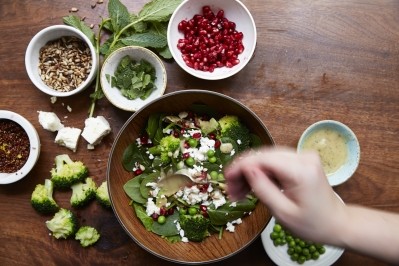Trends
The top pub food for 2016? Jamaican Jerk and 'dude food'

The 22-strong Piper-backed Caribbean chain plans to open up 12 new sites in total this year and has whetted consumer appetite for the genre, which will in turn filter into the pub industry, said Newey.
Newey worked for the Spirit Pub Company, which was recently acquired by Greene King, for five years and has since taken up the role of development chef at food development firm Food Innovation Solutions.
Newey’s top five pub food trends for 2016 include:
- A continued increase in menus that cater for specialist dietary requirements, such as gluten-free and vegan
- Regionalised ‘dude food’, such as Memphis-style BBQ, rather than just BBQ
- South American/Brazilian, as a result of the 2016 Olympics in Rio
- Traditional British food, but with more of a modern and funky twist than in than in the past
- Jamaican Jerk
The diversity in the styles of food was a result of the public becoming more familiar with different ingredients and the fast development of food trends, he added.
However, it was important that skilled chefs took the time to get the offer right when translating these trends onto their pub menus to ensure their customers would buy into them.
“What’s so exciting about working on these menus is that you have to consider so many factors of what guests will order,” said Newey.
‘Understand your guest’
“It’s not just a case of ‘I think that will sell’, its understanding your guest base and knowing what your target audience is.
“So many times I have been out for a meal and seen a great-sounding fresh salad topped with something like deep fried chicken or belly pork … I don’t quite understand who the target audience is.”
As well as his top five predicted trends, Newey would also like to see more exotic influences from other parts of the world feature on pub menus.
“I would love to start looking at Lebanese because of the relaxed style of food it is, which uses simple methods like grilled meats with fresh flavours.”
Asian cuisine would also fit into pubs well as consumer interest in light flavours, such as miso and yuzu, had picked up.
“For example, soups like pho – as we can see by the development of companies such as Pho, which recently opened a shop in Birmingham’s Grand Central station – is likely to be a big trend.”
While there are many trends Newey would like to see grow into pubs, he wanted to see volume become less valuable to diners.
Poor quality food piled high
He was aware factors such as cost were relevant in the market, but said it was hard to grasp the idea of why poor quality food piled high on a plate was deemed better than less, but better quality, food by some customers.
“The ‘value for money brands’ that encourage their guests to spend on a plate of food that’s not about quality, but quantity, gives the pub industry and pub brands a bad name,” he added.
“But, the use of social media, I think, is helping give guests a much better idea of what to expect from where they choose to eat, as well as sharing dining experiences.”
Meanwhile, Publican’s Morning Advertiser food writer Daniel Woolfson explored whether the whole carcase was making a comeback in an exclusive feature.
While using lesser-known cuts of meat and cooking techniques to utilise as much of an animal as possible was nothing new, the rise of chefs, including Fergus Henderson, making more of the whole carcase had bolstered consumer interest.







